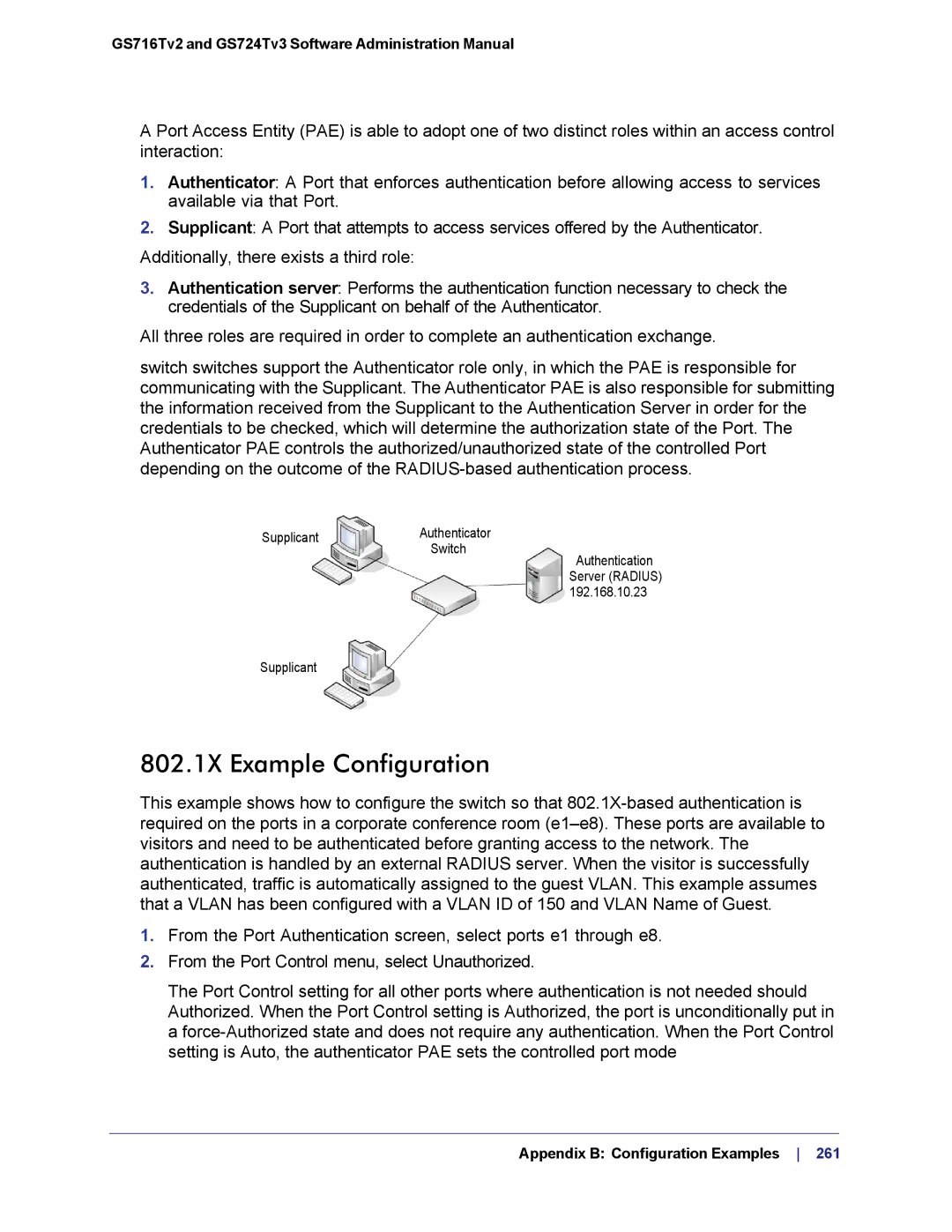
GS716Tv2 and GS724Tv3 Software Administration Manual
A Port Access Entity (PAE) is able to adopt one of two distinct roles within an access control interaction:
1.Authenticator: A Port that enforces authentication before allowing access to services available via that Port.
2.Supplicant: A Port that attempts to access services offered by the Authenticator.
Additionally, there exists a third role:
3.Authentication server: Performs the authentication function necessary to check the credentials of the Supplicant on behalf of the Authenticator.
All three roles are required in order to complete an authentication exchange.
switch switches support the Authenticator role only, in which the PAE is responsible for communicating with the Supplicant. The Authenticator PAE is also responsible for submitting the information received from the Supplicant to the Authentication Server in order for the credentials to be checked, which will determine the authorization state of the Port. The Authenticator PAE controls the authorized/unauthorized state of the controlled Port depending on the outcome of the
Supplicant | Authenticator |
| Switch |
| Authentication |
| Server (RADIUS) |
| 192.168.10.23 |
Supplicant
802.1X Example Configuration
This example shows how to configure the switch so that
1.From the Port Authentication screen, select ports e1 through e8.
2.From the Port Control menu, select Unauthorized.
The Port Control setting for all other ports where authentication is not needed should Authorized. When the Port Control setting is Authorized, the port is unconditionally put in a
Appendix B: Configuration Examples 261
